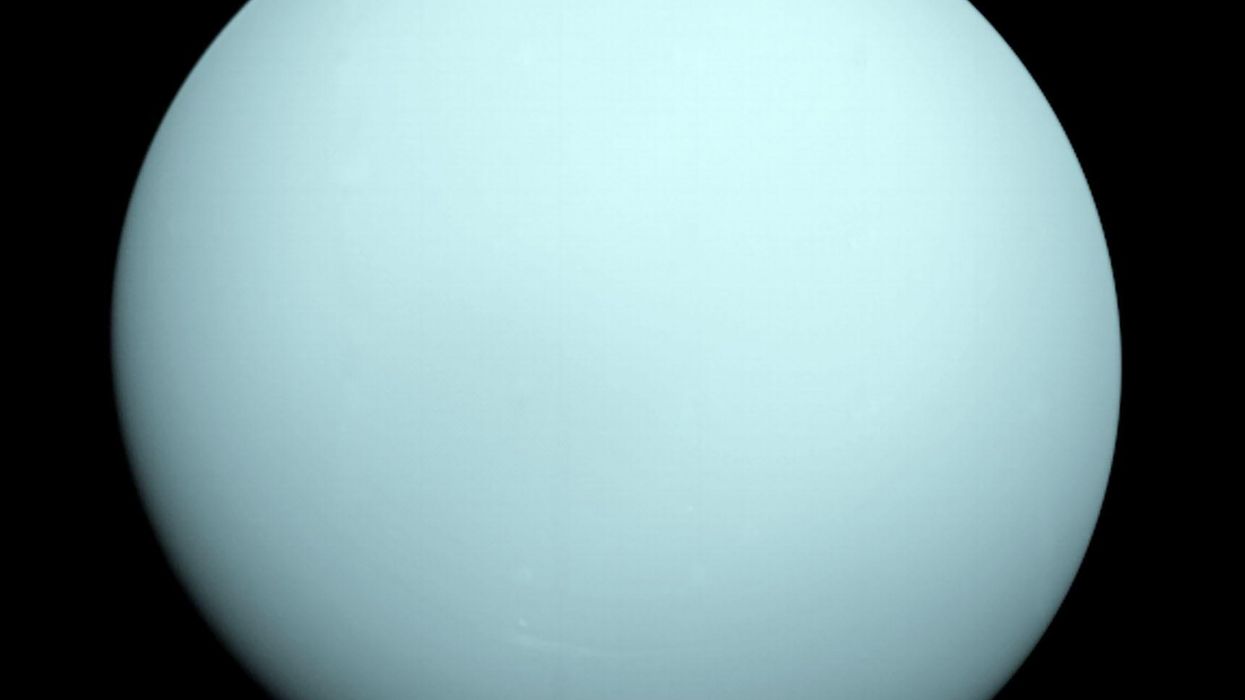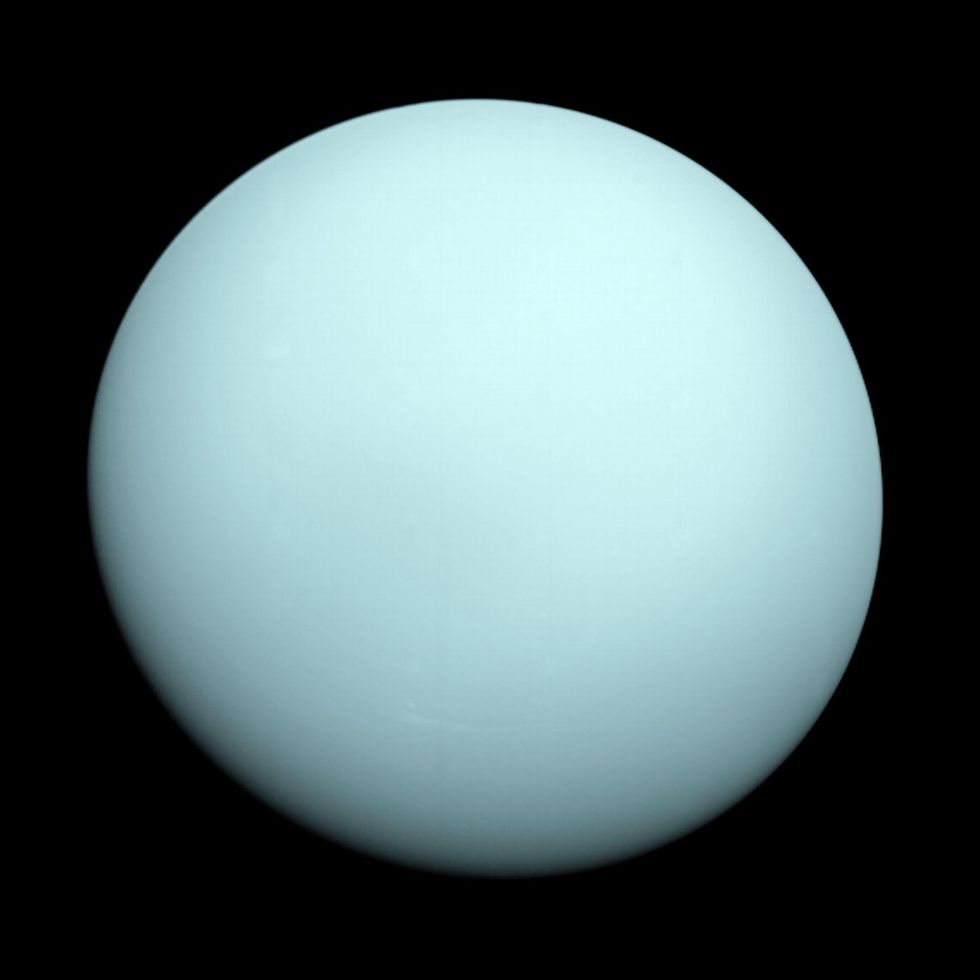Nasa breakthrough: Scientists claim there could be life in our solar system after discovery on moon of Uranus

Uranus seen from Voyager 2, as scientists have explained why, despite having much in common, Uranus and Neptune have very different appearances | PA

The new findings suggest Uranus's moons could be far more active than previously believed
Don't Miss
Most Read
Scientists have discovered that Uranus and its moons may not be the lifeless worlds previously thought after new research revealed a powerful solar storm likely distorted data.
The findings, published in Nature Astronomy, suggest that when Voyager 2 conducted its historic flyby in 1986, it coincided with an extreme space weather event that gave researchers an incorrect picture of the Uranian system.
For nearly four decades, scientists believed the planet and its five major moons were inactive and sterile, unlike other bodies in our outer solar system.
However, the new analysis indicates this assumption may have been based on misleading data collected during what researchers now know was an unusually turbulent period in the planet's environment.
Dr William Dunn, from UCL's Department of Physics and Astronomy, explained how the solar storm affected their understanding of Uranus.
"Almost everything we know about Uranus is based on Voyager 2's two-day flyby," he said.

Gaphic issued by Nasa - JPL-Caltech, of a solar storm on Uranus
|PA
"This new study shows that a lot of the planet's bizarre behaviour can be explained by the scale of the space weather event that occurred during that visit."
The research suggests the powerful solar storm compressed the planet's magnetic bubble, pushing plasma out of it and intensifying its radiation belts.
This distortion created readings that showed Uranus's magnetosphere was nearly empty of plasma, whilst its radiation belts appeared incredibly intense - second only to Jupiter's.
"We now know even less than we thought about what a typical day in the Uranian system might look like," Dr Dunn added.
SCIENCE LATEST:

Graphic issued by Nasa - JPL-Caltech, of a solar storm on Uranus. Mysteries about Uranus which have puzzled scientists for decades may have been the result of unexpected data collected during an unusually powerful solar storm, research suggests
|PA
The new findings suggest Uranus's moons could be far more active than previously believed, potentially harbouring oceans beneath their surfaces.
"A big piece of evidence against there being oceans on Uranus's moons was the lack of detection of any water-related particles around the planet – Voyager 2 didn't find water ions," Dr Dunn explained.
"But now we can explain that: the solar storm basically would have blown all that material away."
Dr Linda Spilker, who worked on the original Voyager 2 mission at NASA's Jet Propulsion Laboratory, supported these conclusions.

Uranus seen from Voyager 2, as scientists have explained why, despite having much in common, Uranus and Neptune have very different appearances
|PA
"The magnetosphere Voyager 2 measured was only a snapshot in time," she said.
"This new work explains some of the apparent contradictions, and it will change our view of Uranus once again."
The possibility of subsurface oceans raises intriguing questions about the potential for life in these distant worlds.
Nasa is currently developing a new mission to Uranus, following the US National Academies' 2023 Planetary Science and Astrobiology Decadal Survey which prioritised the planetary system as a key target.
The mission called the Uranus Orbiter and Probe, is expected to launch in the next decade and arrive by 2045.
According to Nasa's Dr Jamie Jasinski, the new findings will influence how the mission is designed.
"Some of the instruments for the future spacecraft are very much being designed with ideas from what we learned from Voyager 2 when it flew past the system when it was experiencing an abnormal event," he said.
The mission will need to rethink its instrument design to better capture the science needed for new discoveries in this mysterious planetary system.
Dr Dunn said: "These results suggest that the Uranian system could be much more exciting than previously thought.
"There could be moons there that could have the conditions that are necessary for life, they might have oceans that below the surface that could be teeming with fish!"










